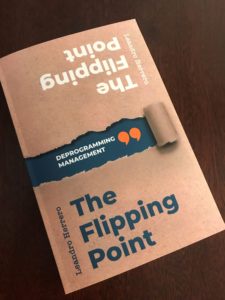The snap shot of the company as pictured in an organizational chart, is probably one of the most fictitious works of management art. Yet, it is a map of power and control that perhaps, in many cases, needs to be shown by the HR Cartography Department.
But the idea that the static display of boxes, reporting lines, solid or dotted, tells us anything about what is going on, is very naive. I don’t think many people would see it differently.
To understand what is really going on, you have to have a ‘live organizational chart’ and that could only be achieved with a live social network analysis.
For all technological advances we have at our disposal, we have a fairly prosaic, rather boring and uninformative ‘thing’ called an organization chart as a ‘representation’ of the company. For example, it tells us nothing about three vital, fundamental components of organizational life:
Unwritten rules. The organizational chart may point to the written ones and only in so far as they are connected with the mechanism of power and reporting lines. For example, whom to escalate a problem. But not even when.
The natural influencers. The organizational chart is blind as to where in the organizational network a particular individual sits. There is no correlation between a hierarchical system and an influence system. Mrs Jones running the mail room may have three times more (cultural) influence and connections than Mrs Smith running the Strategic Unit.
The tribes. Every organization has tribes. Some are functional, and they may have their own organizational chart: IT, Operations, Finance etc. But many powerful tribes are not functional and they don’t have ‘their chart’: the youngest, the part-timers, the remote workers, the newly-acquired, the ‘women in leadership club’, the smokers or the runners/gym-lovers/wanting-to-die-healthy people. And if you don’t know about your tribes, or don’t know what to do with them, please note your Sabbatical has ended, come back.
The organizational chart is that lonely artefact that corporate archaeologists will find and frame, a relic from the divisional and Fordian organization, a Guide to Bosses for Dummies.
Although the reports of its death have been grossly exaggerated, the practice of management as ‘organizational chart reordering and reshuffling’, is today in a rather poor state of affairs.
I despair when I see reorganization announcements solely based on new power distribution, or that say little about the possible excitement of the new structure in favour of that new chair showroom.
Some press releases are new furniture brochures, the new chairs and sofa collection. And a few beds.
________________________________________________________________________________________________
Are you ready to do your organization health check? A must for the well-being of any organization. Join the conversation with us this Thursday July 2nd for our 2nd thought provoking Feed Forward webinar with Leandro Herrero [2], Marieke van Essen [3] and Carlos Escario [4] from The Chalfont Project [1]. 18.00 BST, 19.00CET. Register Now! [1]
Can we have a sense of the reality of communication, connectivity, and collaboration inside the company, a real sense, without simply using assumptions, or taking for granted what we see at face value?
Maybe get confirmation bias out of the window and have a good diagnosis of what is going on, whether we like the outcomes or not. It can be done. And it may save you millions in reorganizations or reshuffling that may not be needed. Or, yes, it validates your intentions.
Let’s put the company in an MRI and find out so that any course of action is informed. (Would you have an operation without X-rays and perhaps MRI?).

Each participant who attends any of the live webinars of the Feed Forward series will be eligible for one copy of Leandro Herrero’s new book: The Flipping Point [5]. Read a recent review [6].
